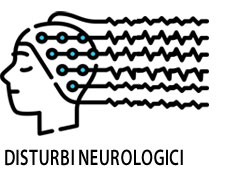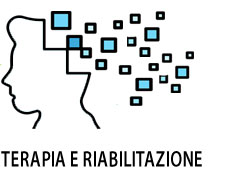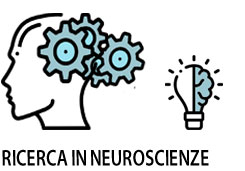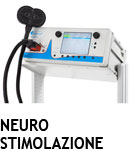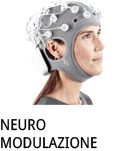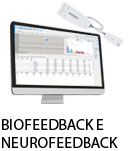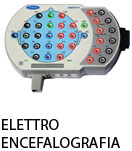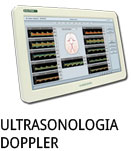- +39 011 5821948
- info@geasoluzioni.it
- Lun - Ven 8:00 - 17:00
Investigating the Efficacy of an Individualized Alpha/Delta Neurofeedback Protocol in the Treatment of Chronic Tinnitus
- Abstract:
- First attempts have demonstrated that the application of alpha/delta neurofeedback in the treatment of chronic tinnitus leads to a reduction of symptoms at the group level. However, recent research also suggests that chronic tinnitus is a decidedly heterogeneous phenomenon, one that requires treatment of distinct subgroups or even on an individual level. Thus, the purpose of this study was to evaluate an individually adjusted alpha/delta neurofeedback protocol. Following previous studies, the delta band fixed between 3 and 4 Hz was chosen as the frequency for inhibition. However, unlike the previous studies, the frequency range for the rewarded alpha band was not fixed between 8 and 12 Hz but rather individually determined according to each patient's specific alpha peak frequency (IAF). Twenty-six chronic tinnitus patients participated in 15 weekly neurofeedback training sessions and extensive pre- and post-tests, as well as follow-up testing 3 and 6 months after training. The main outcome measures were tinnitus-related distress measured with the Tinnitus Handicap Inventory (THI) and Tinnitus Questionnaire (TQ), tinnitus loudness, and pre- and post-training resting-state EEG activity in trained frequency bands. In Results, the neurofeedback protocol led to a significant reduction of tinnitus-related distress and tinnitus loudness. While distress remained on a low level even 6 months after the completion of training, loudness returned to baseline levels in the follow-up period. In addition, resting-state EEG activity showed an increase in the trained alpha/delta ratio over the course of the training. This ratio increase was related to training-induced changes of tinnitus-related distress as measured with TQ, mainly due to increases in the alpha frequency range. In sum, this study confirms the alpha/delta neurofeedback as a suitable option for the treatment of chronic tinnitus and represents a first step towards the development of individual neurofeedback protocols.
- Patologie/Applicazioni:
- Anno:
- 2019
- Tipo di pubblicazione:
- Articolo
- Parola chiave:
- Neurofeedback; Alpha-Delta nfb; tinnitus
- Testata scientifica:
- Neural Plasticity
- Nota:
- Pazienti con acufene cronico soggettivo (tinnitus) tra i 18 e i 75 anni con un'adeguata conoscenza della lingua tedesca, senza nessun altro disturbo psichiatrico o neurologico, e privi di tendenza acuta al suicidio. Dopo un assessment iniziale, i pazienti hanno partecipato a un totale di 15 sessioni di neurofeedback su base settimanale. L'EEG per il training di neurofeedback è stato registrato con quattro elettrodi argento / argento cloruro, FC1, FC2, F3 e F4 combinati con un amplificatore. Gli elettrodi sui lobi delle orecchie fungevano da elettrodi di riferimento e AFz come elettrodo di messa a terra. La frequenza di campionamento era impostata a 250 Hz e l'impedenza mantenuta sotto i 20 kΩ. Nella prima sessione di neurofeedback, è stato determinato un picco alfa individuale per ciascun partecipante calcolando la media dei picchi alfa su 30 secondi di EEG a riposo. Successivamente, la frequenza è stata impostata nell'intervallo di ± 2 Hz attorno a questa frequenza di picco. Per evocare un feedback negativo veniva impostato l'intervallo di frequenza di 3-4 Hz corrispondente alla banda delta. Ai pazienti è stato chiesto di sedersi comodamente su una sedia, evitare un eccessivo movimento muscolare e prestare molta attenzione al gioco di feedback. Seguendo la modalità degli studi precedenti, non sono state fornite ulteriori istruzioni su come influenzare il feedback o quale strategia utilizzare per consentire la massima libertà possibile. L'allenamento è durato 15 minuti ed è stato ripetuto una volta a settimana, preferibilmente nello stesso giorno della settimana e alla stessa ora. Il protocollo di neurofeedback con bande di frequenza individualizzate discusse in questo articolo può essere considerato una buona opzione nel trattamento dell'acufene cronico. Al fine di influenzare l'intensità della percezione in modo sostenibile, potrebbe essere raccomandata una frequenza più elevata (2-3 sedute a settimana) e sessioni più lunghe (min 20 minuti).
- DOI:
- 10.1155/2019/3540898
Hits: 2089
La nostra storia
GEA soluzioni si affaccia nel 2013 al mercato della strumentazione medicale di alto livello tecnologico ma la sua storia parte da più lontano, clicca qui per approfondire.
GEA SOLUZIONI SRL
via Spalato 72/A, Torino
Tel.: 011 5821948 / 011 4463853
Fax: 011 0433281
Email: info @ geasoluzioni.it
P. IVA IT11696920013
REA TO1233648

